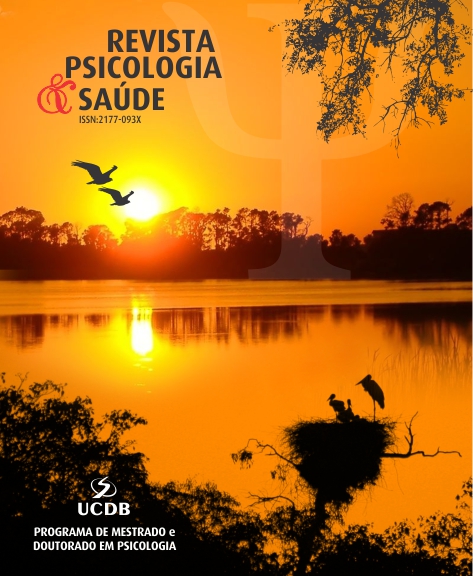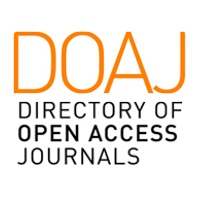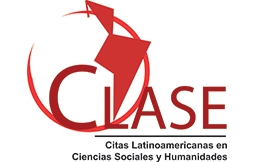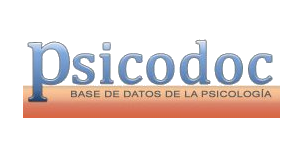What’s (Im)Possible to Say: A Psychoanalytic Discussion about the Scarifications Among Adolescents Today
DOI:
https://doi.org/10.20435/pssa.v1i1.2187Keywords:
self-harming practices, adolescence, contemporary issues, writing, PsychoanalysisAbstract
Scarifications in adolescence have gained the status of a social problem, challenging health knowledge and practices, including psychology and psychoanalysis. This article is the result of a master's dissertation, which stemmed from questions raised during practice with adolescents at a Psychosocial Care Center (CAPS). The aim of the article was to discuss, from a psychoanalytic perspective, the role of self-harming practices in the discourse and lives of female adolescents. The research, based on a qualitative method, used as its corpus the posts of adolescents on Facebook groups who identify with self-harming practices. The results allowed the aim of this work to be achieved and led to the conclusion that the adolescents, through their posts, attempt to give form to what they cannot name, to the imponderable, to what manifests as the pain of existence. Thus, it was evident the identification among adolescents who resort to self-harming acts, highlighting the supplementary function in the formation of groups, as well as the inventive nature in writing the impossible, pointing to the importance of psychoanalytic listening in offering other ways that allow these adolescents to adopt a new subjective position in the face of the malaise and suffering they experience.
References
Ariès, P. (1986). História social da criança e da família. 2ª ed. Guanabara.
Alberti, S. (2009). Esse sujeito adolescente. Rios Ambiciosos.
Araújo, J. (2019). Cortes que viram cartas: Ensaios sobre automutilação na clínica psicanalítica [Tese de Doutorado, Universidade de Brasília, Brasília-DF]. https://repositorio.unb.br/handle/10482/37432
Arteiro, I. (2017). A mulher e a maternidade: Um exercício de reinvenção [Tese de Doutorado, Universidade Católica de Pernambuco). http://tede2.unicap.br:8080/bitstream/tede/973/5/isabela_lemos_arteiro_ribeiro_lins.pdf
Costa, A. (2002). Se fazer tatuar: Traço e escrita das bordas corporais. Estilos da Clínica, 7(12), 56–63. DOI: https://doi.org/10.11606/issn.1981-1624.v7i12p56-63
Ferreira, J. C., & Costa, P. J. (2018). Mensagens sobre escarificações na internet: Um estudo psicanalítico. Ayvu: Revista de Psicologia, 4(2), 133–159. https://periodicos.uff.br/ayvu/article/view/22243/13142 DOI: https://doi.org/10.22409/ayvu.v4i2.22243
Freud, S. (1905). Três ensaios para uma teoria da sexualidade. Edição Standard Brasileira das Obras psicológicas Completas de Sigmund Freud (Vol. VII). Imago. (Trabalho original publicado em 1996)
Freud, S. (1932). Conferência XXIII: Feminilidade. Edição Standard Brasileira das Obras psicológicas Completas de Sigmund Freud (Vol. XXI). Rio de Janeiro: Imago. (Trabalho original publicado em 1993)
Lacan, J. (1971). Seminário, livro 18: De um discurso que não fosse semblante. Jorge Zahar. (Trabalho original publicado em 2009)
Lacan, J. (1972–1973). Seminário, livro 20: Mais ainda (2ª ed., 9–141). Zahar. (Trabalho original publicado em 1985)
Lacan, J. (1974). Prefácio a o despertar da primavera. In: Outros escritos. Zahar. (Trabalho original publicado em 2003).
Lacadée, P. (2017). Los sufrimientos modernos del adolescente (1ª ed.). Unsan Edita / Fundacion CIPA.
Le Breton, D. (1953). A sociologia do corpo (2ª ed., Sônia M. S. Fuhrmann, trad.). Vozes, 2007.
Le Breton, D. (2017). Uma breve história da adolescência (Andréa Maris Guerra et al., Trads.). Editora PUC Minas.
Madeira, L. (2020). Do sangue à tinta: A escrita de si como mediação para a autonomia de estudantes que se autolesionam [Dissertação de Mestrado, Universidade Federal do Ceará]. https://repositorio.ufc.br/bitstream/riufc/53348/1/2020_dis_lcnmadeira.pdf
Silva, A.; Botti, N. (2018, Maio–Agosto). Caracterização do perfil de participantes de um grupo de automutilação no facebook. Salud & Sociedad, 9(2), 160–169. https://revistas.ucn.cl/index.php/saludysociedad/article/view/3051/2864 DOI: https://doi.org/10.22199/S07187475.2018.0002.00003
Siqueira, E. (2009). O estatuto contemporâneo das identificações em sujeitos com marcas e alterações corporais (Dissertação de Mestrado, Universidade Católica de Pernambuco [UNICAP]). https://tede2.unicap.br:8080/bitstream/tede/112/1/dissertacao_elizabete.pdf
Wedekind, F. (1891). O despertar da primavera – Peça do gênero drama (1ª ed.). Alemanha. (Trabalho original publicado em 1890)
Veschi, B. (2020). Etimologia de adolescência. Etimologia Origem do Conceito, Cultura. https://etimologia.com.br/adolescencia/
Viola, D. (2017). O saber à flor da pele: Três ensaios psicanalíticos sobre a adolescência. Margem da palavra.
Zucchi, M. (2014). Esse estranho que nos habita: O corpo nas neuroses clássicas e atuais. Opção Lacaniana, 14(5), 1–12, jul. 2014. http://www.opcaolacaniana.com.br/pdf/numero_14/esse_estranho_que_nos_habita.pdf
Published
How to Cite
Issue
Section
License

This work is licensed under a Creative Commons Attribution 4.0 International License.
The articles published on journal Psicologia e Saúde holds the copyrights of all texts published by it. Due to that, there is a demand for a letter of copyright cession (see Appreciation). The full reproduction of any article of this Journal in other publications, by any means, requires a written authorization of the Editorial Board. Partial reproductions of articles (abstracts, more than 500 words of text, tables, pictures and other illustrations, sound files) should have the written permission of the Editorial Board and the Authors.












